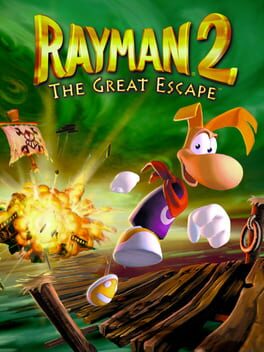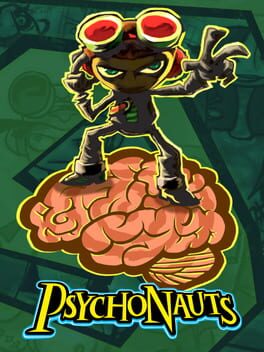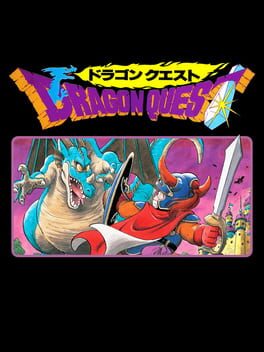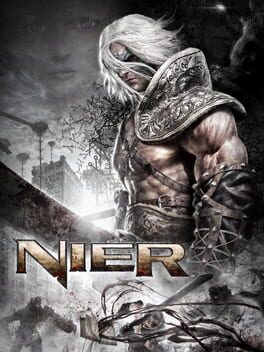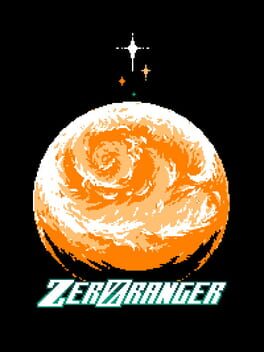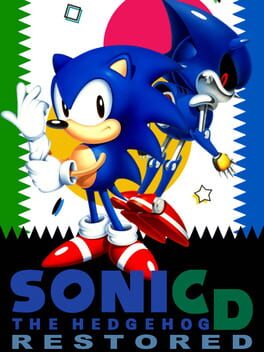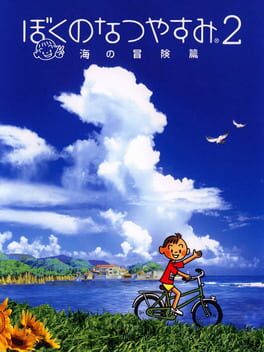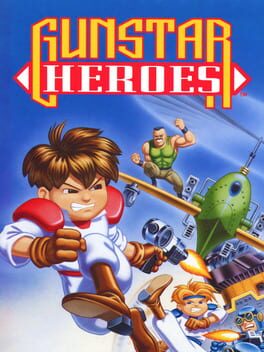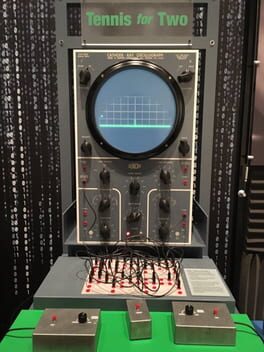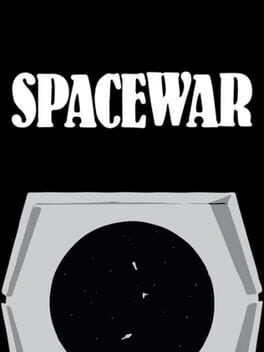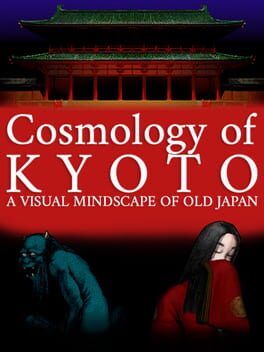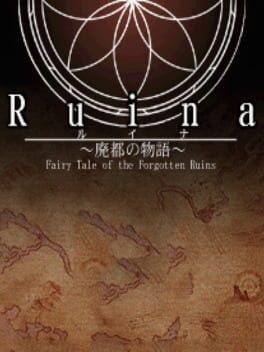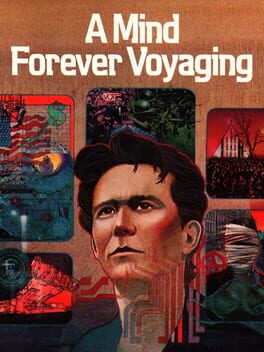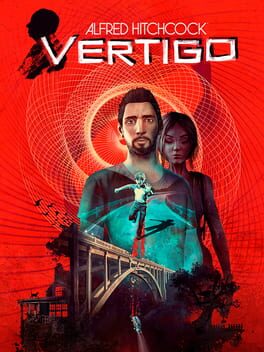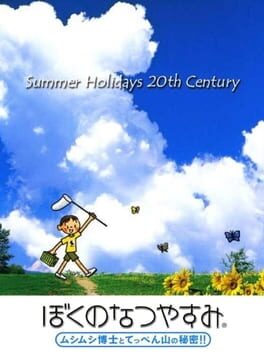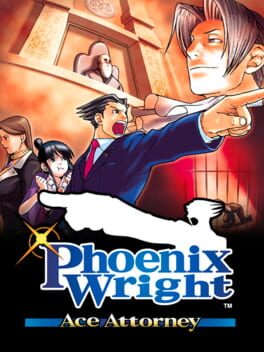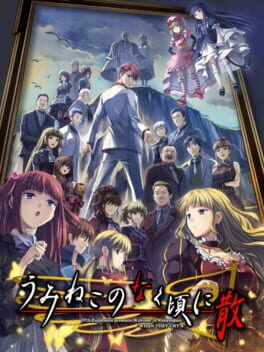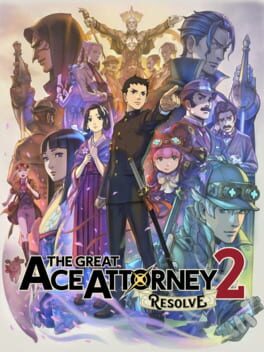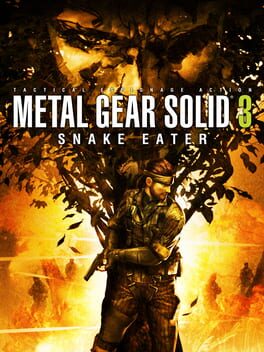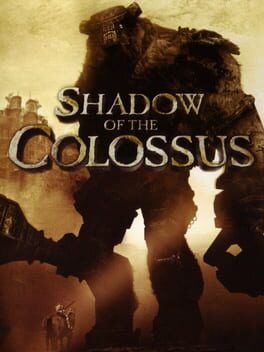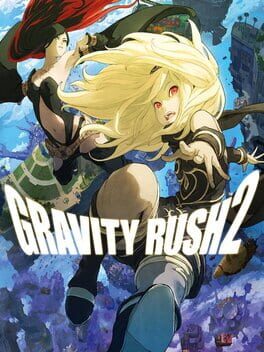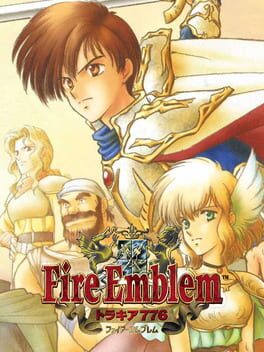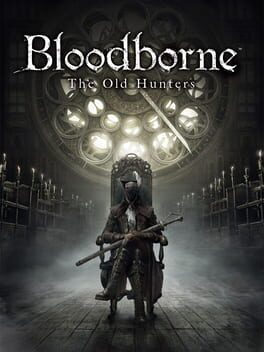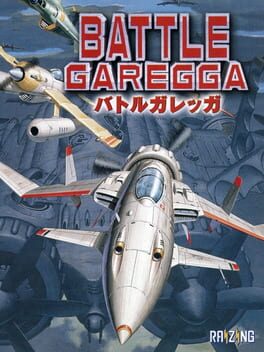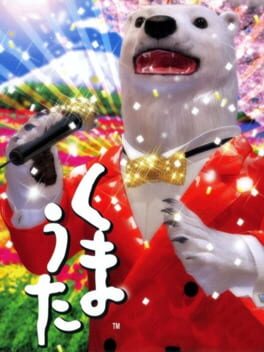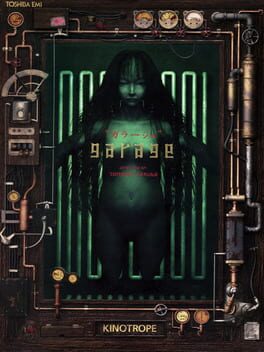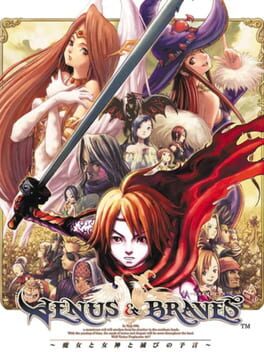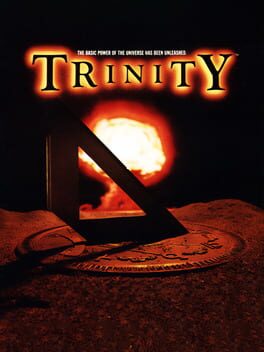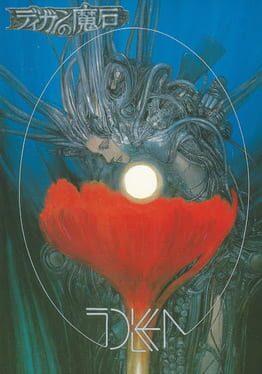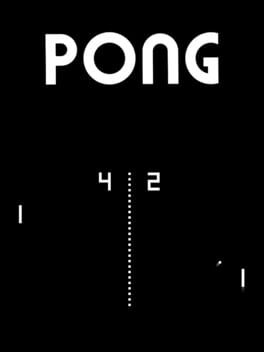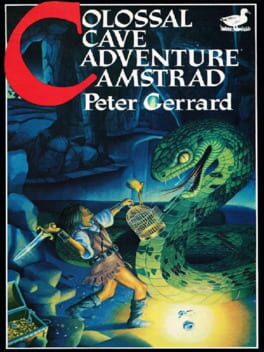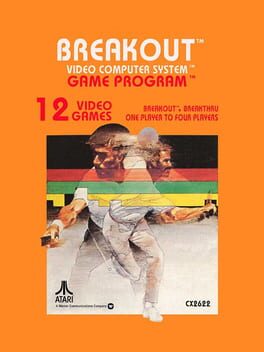floatonby_
9 reviews liked by floatonby_
Outer Wilds
2019
This review contains spoilers
There's a lot to discover out there- or, there was, at one point, but it's all been discovered since, hundreds of thousands of years before you even hatched. Games like this can offer recluse from the harsh, pre-explored reality that we live in, so it's disappointing how often Outer Wilds shifts focus away from its naturally occurring astronomical mysteries and towards its ancient alien race that has already solved all of them. It's not about monitoring the cyclones on Giant's Deep and reasoning out that some push and some pull; it's about trying to get into an observatory that houses a model of the phenomenon. It's not about sending out a drone to take pictures of an angler and realizing that its eyes are glazed-over; it's about finding the skeleton in the Sunless City and the accompanying biologists' report that says that they're blind. Of course, you can figure out any of these things on your own, but the 22-minute timer actively discourages the extensive trial-and-error that's necessary to evoke a true feeling of discovery, effectively telling you to try visiting a different planet if you weren't able to make any progress on your last loop. The Nomai are undeniably essential as a way to tie all of the cool space stuff together, and their story is certainly worth telling, but I wish their findings weren't so well-preserved. There's an important distinction between discovering and just plain learning, best illustrated here by the Tower of Quantum Trials, which feels like the tutorial level of a Portal-inspired first-person puzzler rather than a part of a wider world. The gap between what's plainly written out for you (blind fish) and how you can use that information to reach your goal (move slowly) is pretty small, and it's only made smaller by the fact that your ship log neatly summarizes all of the important bits for you. What I crave most from a game like this is the feeling of being stuck, or, more accurately, of overcoming said stuckness, and Outer Wilds just doesn't deliver in that regard, and, as a result, I was never as into it as I would've liked. I kept waiting for it to stonewall me, for that moment where I felt like I'd exhausted every possible avenue, but it never came.
And yet... the game just works anyway. Contrary to how dour that first paragraph reads, I do enjoy learning (albeit less than discovery) especially when it's done this well. Every loop brings a new revelation, and not a single fact about the universe feels forced or out of place. I'd go as far as to say this is the most consistent set of internal logic that I've ever experienced in a video game, and it knows it, considering how much joy it takes in hiding things in plain sight. Of course that fog planet you kept seeing was the quantum moon all along. Of course Ash Twin runs out of sand eventually. Of course the Tower of Quantum Knowledge can get sucked into the black hole. Of course you can't land your ship on the sun station, why do you think it's marked with the same pattern as all of the other warp spots? The amount of mileage it gets out of being a game where you can't interact, only observe (wink, wink, nudge, nudge) is staggering, and what makes many of these world mechanics effective is that they're decidedly un-gamey. Most other games would've let you know in some way when you're being properly shielded by a jellyfish in order to combat I-tried-the-right-solution-but-it-didn't-work-syndrome, but the fact that you don't get any feedback and just unceremoniously pass through the electricity barrier makes it that much more satisfying. It seems like it would be great fun to watch someone else play this game, smirking internally as they walk right past something that you already know is cosmically important, and laughing hysterically as they destroy their ship by ramming headfirst into a planet at 400 m/s. Because it's hard to imagine this game going anywhere without committing to the unforgiving physics of outer space- aside from the ship's autopilot system, arguably, no corners are cut here, culminating in an environment that feels appropriately cutthroat. Get too close to the sun and you're screwed, drift too far from your ship and you're screwed, forget to stop and refuel your jetpack and you're screwed. It's a nice reminder that we as humans (or as Timber Hearthians) have no real way to conceptualize true three-dimensional movement, and, as a result, arriving anywhere safely can often feel like a small miracle, which leads to the game's best moments. Carefully following the gravity crystals to reach the Hanging City for the first time, struggling to land on the quantum moon while simultaneously viewing a picture of it, and, of course, that final trek- replaying the end of loop music during was nothing short of brilliant. I'm much more mixed on that overly artsy indie epilogue, but getting to the Eye at last was the perfect capstone for an experience that deserves its reputation as a universal recommendation... even if my personal solar system wasn't as shattered as many others' were.
And yet... the game just works anyway. Contrary to how dour that first paragraph reads, I do enjoy learning (albeit less than discovery) especially when it's done this well. Every loop brings a new revelation, and not a single fact about the universe feels forced or out of place. I'd go as far as to say this is the most consistent set of internal logic that I've ever experienced in a video game, and it knows it, considering how much joy it takes in hiding things in plain sight. Of course that fog planet you kept seeing was the quantum moon all along. Of course Ash Twin runs out of sand eventually. Of course the Tower of Quantum Knowledge can get sucked into the black hole. Of course you can't land your ship on the sun station, why do you think it's marked with the same pattern as all of the other warp spots? The amount of mileage it gets out of being a game where you can't interact, only observe (wink, wink, nudge, nudge) is staggering, and what makes many of these world mechanics effective is that they're decidedly un-gamey. Most other games would've let you know in some way when you're being properly shielded by a jellyfish in order to combat I-tried-the-right-solution-but-it-didn't-work-syndrome, but the fact that you don't get any feedback and just unceremoniously pass through the electricity barrier makes it that much more satisfying. It seems like it would be great fun to watch someone else play this game, smirking internally as they walk right past something that you already know is cosmically important, and laughing hysterically as they destroy their ship by ramming headfirst into a planet at 400 m/s. Because it's hard to imagine this game going anywhere without committing to the unforgiving physics of outer space- aside from the ship's autopilot system, arguably, no corners are cut here, culminating in an environment that feels appropriately cutthroat. Get too close to the sun and you're screwed, drift too far from your ship and you're screwed, forget to stop and refuel your jetpack and you're screwed. It's a nice reminder that we as humans (or as Timber Hearthians) have no real way to conceptualize true three-dimensional movement, and, as a result, arriving anywhere safely can often feel like a small miracle, which leads to the game's best moments. Carefully following the gravity crystals to reach the Hanging City for the first time, struggling to land on the quantum moon while simultaneously viewing a picture of it, and, of course, that final trek- replaying the end of loop music during was nothing short of brilliant. I'm much more mixed on that overly artsy indie epilogue, but getting to the Eye at last was the perfect capstone for an experience that deserves its reputation as a universal recommendation... even if my personal solar system wasn't as shattered as many others' were.
After Extremely British Mario 64 (BANJO-KAZOOIE) was a big hit, obviously the world needed Extremely French Mario 64, and here it is.
It's quite beautiful for a game of this type and era, with the painterly style of its stunningly-animated (but otherwise bad) predecessor adeptly moved into 3D. No small task on the N64! Gameplay-wise it is significantly more compelling than the 2D game, but it's mostly just functional rather than truly exciting to play. There unfortunately isn't a real overworld, so you just alternate between unnecessarily involved "oo will 'elp me get zee leed off my zhar of rainbeaus???" story cutscenes and wildly differing-length linear levels with odd structures. For some reason a huge amount of the platforming and obstacles in this game take the form of one-hit or one-mistake equals fail-and-start-over mini challenges that make playing feel like constantly getting on and off a tightrope, which - sorry! - sucks. But there is skill and smarts to the overall design, moreso than some contemporaries.
I respect people's nostalgia for this I guess, but I find it competent at best. Certainly better than GEX.
It's quite beautiful for a game of this type and era, with the painterly style of its stunningly-animated (but otherwise bad) predecessor adeptly moved into 3D. No small task on the N64! Gameplay-wise it is significantly more compelling than the 2D game, but it's mostly just functional rather than truly exciting to play. There unfortunately isn't a real overworld, so you just alternate between unnecessarily involved "oo will 'elp me get zee leed off my zhar of rainbeaus???" story cutscenes and wildly differing-length linear levels with odd structures. For some reason a huge amount of the platforming and obstacles in this game take the form of one-hit or one-mistake equals fail-and-start-over mini challenges that make playing feel like constantly getting on and off a tightrope, which - sorry! - sucks. But there is skill and smarts to the overall design, moreso than some contemporaries.
I respect people's nostalgia for this I guess, but I find it competent at best. Certainly better than GEX.
One of the best controlling games on the PS2. Ratchet is as effortless to maneuver as ever, with his movement being some of the best to ever grace a console. Bad news is, they forgot to design any levels this time around!
I feel like with each subsequent Ratchet game, I go back and rate the last one higher for what the sequel is lacking. By the time I finish Into the Nexus, Ratchet and Clank 2002 will have 13 stars added to it.
Up Your Arsenal is widely considered the best in the series, and I've also seen people who despise this game. I can't find it in my heart to hate Up Your Arsenal, but I also am not in love with it either, but I find it a bit weak to say I'm somewhere in the middle. The problem is how unfinished the game feels at points, it makes it difficult TO make any grand statement on it when it feels like a dev studio who has been worked to fucking death is starting to burn at both ends. I wish they had been allowed to, you know, take a break and let this game cook, because there's a lot to love here! When a game is made in not even an entire year and has a multiplayer shoehorned into it, it's a miracle the game doesn't mircowave your PS2.
The biggest casualty here, as I alluded to up top, is the level design. There are very few proper Ratchet and Clank levels here: interesting platforming and combat challenges with branching paths and unique level gimmicks. They had started to dissipate by the end of Going Commando, and in Up Your Arsenal they are almost completely M.I.A. In their place you will find a bunch of repurposed multiplayer maps made into Battelfield missions, which I honestly wouldn't have an issue with, if the enemy design was more engaging. Enemies are nowhere near as dynamic as the old games, and are repeated ad nauseam to the point the action just becomes a lot of noise.
This is a tragedy, as the action is the best it has ever been! The guns look and sound great, they upgrade regularly keeping your rotation constantly relevant, and Ratchet's quickness means you can pull off some awesome fucking stunts during the combat, it's just dying for a cast of enemies that compliment it.
Gone is also the biting satire that gave the first two games an anarchic edge. The toll gates are gone, which for games about how self-serving every single person is, fit perfectly. It feels like everything that gave Ratchet and Clank a unique identity is in the process of being sanded down: a process that will be hideously complete with Ratchet and Clank 2016. Here, it is being sanded down into a very fun third-person action game, so I'm not TOO bent out of shape about it, but I would be lying if I said I didn't miss the vibrant and enigmatic nature of 1 and hell, even Going Commando. The colors are just gone! The terrain is just a straight shot to the end with a couple of jumps here and there to remind you of old times. The menus and hud are nasty fucking orange and lack any and all identity. Also what happened to the main menu?? Insomniac have always had some great main menus but now it's just Fugly Orange Boxes. What They Do To You Ratchet!!! During the Giant Clank fight at the Holovid studio, it occurred to me that the fight was less visually dynamic than the Godzilla fight in Gex: Enter The Gecko, a game for the PS1. It finally dawned on me that this is a visually very ugly game, even while the character animations are at their peak. It's a very odd contradiction for the game to be living.
The story is also here, and it's whatever. Nefarious is entertainingly hammy and his butler Lawrence is a great foil. Qwark's plans, drawn in crayon, showing Ratchet constantly having to put himself into dangerous scenarios is very funny, and Jim Ward continues to deliver absolute gold as Qwark. James Arnold Taylor also gets some incredible voice work done here as Ratchet, after his personality was in a weird transitory period in GC. I still found the dialogue to be entertaining and snappy enough to keep me going until the end, but nothing was as delightfully clever as it used to be. A main plot about an evil robot wanting to destroy humans is so by-the-books, what happened to the game I love.
This is the first game to have actual writers on board, which, along with 2016's putrid stench still hanging around, leads me to believe that professional writers are hacks. Much to think about here.
The forced-in multiplayer, which obviously affected the single player's development, can't be played anymore, so, cool. Nice. It was a lot of fun back in the day though, they were kind of cooking with that one.
No grind-rails, no space fighting, no racing, only one arena, there is just so much missing here from Going Commando that while I think Up Your Arsenal is more mechanically solid than GC, I just can't agree with anyone saying it's some kind of masterpiece when I am really starting to think this series peaked with the first one and just goes downhill from there.
I feel like with each subsequent Ratchet game, I go back and rate the last one higher for what the sequel is lacking. By the time I finish Into the Nexus, Ratchet and Clank 2002 will have 13 stars added to it.
Up Your Arsenal is widely considered the best in the series, and I've also seen people who despise this game. I can't find it in my heart to hate Up Your Arsenal, but I also am not in love with it either, but I find it a bit weak to say I'm somewhere in the middle. The problem is how unfinished the game feels at points, it makes it difficult TO make any grand statement on it when it feels like a dev studio who has been worked to fucking death is starting to burn at both ends. I wish they had been allowed to, you know, take a break and let this game cook, because there's a lot to love here! When a game is made in not even an entire year and has a multiplayer shoehorned into it, it's a miracle the game doesn't mircowave your PS2.
The biggest casualty here, as I alluded to up top, is the level design. There are very few proper Ratchet and Clank levels here: interesting platforming and combat challenges with branching paths and unique level gimmicks. They had started to dissipate by the end of Going Commando, and in Up Your Arsenal they are almost completely M.I.A. In their place you will find a bunch of repurposed multiplayer maps made into Battelfield missions, which I honestly wouldn't have an issue with, if the enemy design was more engaging. Enemies are nowhere near as dynamic as the old games, and are repeated ad nauseam to the point the action just becomes a lot of noise.
This is a tragedy, as the action is the best it has ever been! The guns look and sound great, they upgrade regularly keeping your rotation constantly relevant, and Ratchet's quickness means you can pull off some awesome fucking stunts during the combat, it's just dying for a cast of enemies that compliment it.
Gone is also the biting satire that gave the first two games an anarchic edge. The toll gates are gone, which for games about how self-serving every single person is, fit perfectly. It feels like everything that gave Ratchet and Clank a unique identity is in the process of being sanded down: a process that will be hideously complete with Ratchet and Clank 2016. Here, it is being sanded down into a very fun third-person action game, so I'm not TOO bent out of shape about it, but I would be lying if I said I didn't miss the vibrant and enigmatic nature of 1 and hell, even Going Commando. The colors are just gone! The terrain is just a straight shot to the end with a couple of jumps here and there to remind you of old times. The menus and hud are nasty fucking orange and lack any and all identity. Also what happened to the main menu?? Insomniac have always had some great main menus but now it's just Fugly Orange Boxes. What They Do To You Ratchet!!! During the Giant Clank fight at the Holovid studio, it occurred to me that the fight was less visually dynamic than the Godzilla fight in Gex: Enter The Gecko, a game for the PS1. It finally dawned on me that this is a visually very ugly game, even while the character animations are at their peak. It's a very odd contradiction for the game to be living.
The story is also here, and it's whatever. Nefarious is entertainingly hammy and his butler Lawrence is a great foil. Qwark's plans, drawn in crayon, showing Ratchet constantly having to put himself into dangerous scenarios is very funny, and Jim Ward continues to deliver absolute gold as Qwark. James Arnold Taylor also gets some incredible voice work done here as Ratchet, after his personality was in a weird transitory period in GC. I still found the dialogue to be entertaining and snappy enough to keep me going until the end, but nothing was as delightfully clever as it used to be. A main plot about an evil robot wanting to destroy humans is so by-the-books, what happened to the game I love.
This is the first game to have actual writers on board, which, along with 2016's putrid stench still hanging around, leads me to believe that professional writers are hacks. Much to think about here.
The forced-in multiplayer, which obviously affected the single player's development, can't be played anymore, so, cool. Nice. It was a lot of fun back in the day though, they were kind of cooking with that one.
No grind-rails, no space fighting, no racing, only one arena, there is just so much missing here from Going Commando that while I think Up Your Arsenal is more mechanically solid than GC, I just can't agree with anyone saying it's some kind of masterpiece when I am really starting to think this series peaked with the first one and just goes downhill from there.
Psychonauts
2005
Dragon Quest
1993
So this year I was going to make a conscious effort to work through my backlog. Buy less games, play more etc. That quickly fell apart in the first month however I've done decently at playing them so far and the Odin Sphere remaster Leifthrasir is one of the older PSN purchase I have yet to play . I decided it was a good title to finally finish on my 2024 games played list.
Odin Sphere is the third Vanillaware title I've played at the time of writing. The first was Dragon's Crown, a game I truly hated but perhaps approached wrong expecting a four player Guardian Heroes. The second was 13 Sentinels: Aegis Rim which I utterly adored for it's keep you guessing sci-fi story. (First quick review I wrote on Backloggd actually) It's fitting then that Odin Sphere would sit somewhere in the middle between them as a game I like but with a lot of flaws preventing me loving it and hard to actually recommend.
So lets get the positive aspects out in the open first as this game does have a lot of good going for it. Firstly the artwork and animations are pretty stunning. Vanillaware is pretty famous for it's layered 2D art style and animations. The characters and enemies all stand out and the usage of colour and style makes it feel like a painting in motion. To carry on the presentation side of my positive compliments, the whimsical soundtrack is stunning. I especially like the theme song but it's all gorgeous wrapping up Odin Sphere into a great looking and sounding package.
I actually had to double check this was originally a PS2 game because even as a remaster it just doesn't feel like it. Equally it just doesn't play like it came from that console. The combat animations and battles are all so smooth chaining from moves to move. This isn't an insult to the PS2, it was an amazing system, just a compliment to Odin sphere's visuals and animations. When in combat the characters have a large amount of moves with more unlocking as the game progresses. It allows you to chain various moves and skills into large combos. Hitting a group of enemies into a huge combo with perfect blocks to keep the chain is initially really fun. I'm saying initially because this is where my praise of Odin sphere starts to breakdown a bit unfortunately. The game is based around five characters:
- Gwyndolin, a Valkyrie Princess.
- Cornelius, a prince cursed into a beast form.
- Mercedes, a fairy Princess.
- Oswald, an orphaned knight with a cursed sword.
- Velvet, a forest Witch.
Similar to Vanillaware's later title 13 Sentinels each character has their own story arc playing the game from different perspectives before a final chapter linking the full story together. In principal the idea is great. Vanillaware themselves proved this can work wonderfully as a concept. Here it is extremely flawed though. My biggest issue is there is no variety between each character play through. They have different moves, weapons and some unique skills on a couple of them but they are fundamentally the same. When you take that into account along with the fact that each one of them plays through the same 6 locations fighting the same 20 ish enemies and same bosses and no matter how gorgeous Odin Sphere is, and no matter how nicely it plays it just becomes tedious. You have to play all five scenarios to see the ending and by the 4th character I was just feeling burnt out of it all.
Perhaps because it's an action RPG there is a greater downtime between the story sections that could have kept the mystery going for me to want to push onwards but I feel the narrative behind the game overall just isn't strong enough to justify the multiple perspectives. There isn't a huge mystery that gets unveiled or a surprise twist. Each scenario explains a few things more but I didn't find any of it compelling. Everything around the multiple protagonist formula here undermines the story and the mechanics. Some of the story arcs on each character don't quite match with some odd reasons to make sure the character does visit the snow mountain or lava kingdom etc. Having a food resource cooking mini game for levelling is a neat little idea but gets boring having to save ingredients and feed each character as a core way to level them up every time. Exploring never has anything new on different characters, same levels, same equipment. This feels like a 6 hour game padded out to a 30 hour game and the fairy tale esq setting and lore aren't strong enough to carry that.
I hate typing this as I wanted to love Odin Sphere like I did 13 Sentinels. I am however grateful to it for being the game that put Vanillaware on the map, the game that is almost like a later prototype they built on. I'm glad I played it, it's well made, and looks and plays wonderfully it's just lacking meat on it's bones.
I wish you really could just grow sheep from trees.
+ Gorgeous art design.
+ Fun , fast and fluid combat system.
+ Pleasant whimsical soundtrack and great voice acting (I played it in Japanese).
- The game loop is extremely repetitive and the story cannot carry nearly the exact same content from a slightly different view point. Only one real negative but it's a big one.
Odin Sphere is the third Vanillaware title I've played at the time of writing. The first was Dragon's Crown, a game I truly hated but perhaps approached wrong expecting a four player Guardian Heroes. The second was 13 Sentinels: Aegis Rim which I utterly adored for it's keep you guessing sci-fi story. (First quick review I wrote on Backloggd actually) It's fitting then that Odin Sphere would sit somewhere in the middle between them as a game I like but with a lot of flaws preventing me loving it and hard to actually recommend.
So lets get the positive aspects out in the open first as this game does have a lot of good going for it. Firstly the artwork and animations are pretty stunning. Vanillaware is pretty famous for it's layered 2D art style and animations. The characters and enemies all stand out and the usage of colour and style makes it feel like a painting in motion. To carry on the presentation side of my positive compliments, the whimsical soundtrack is stunning. I especially like the theme song but it's all gorgeous wrapping up Odin Sphere into a great looking and sounding package.
I actually had to double check this was originally a PS2 game because even as a remaster it just doesn't feel like it. Equally it just doesn't play like it came from that console. The combat animations and battles are all so smooth chaining from moves to move. This isn't an insult to the PS2, it was an amazing system, just a compliment to Odin sphere's visuals and animations. When in combat the characters have a large amount of moves with more unlocking as the game progresses. It allows you to chain various moves and skills into large combos. Hitting a group of enemies into a huge combo with perfect blocks to keep the chain is initially really fun. I'm saying initially because this is where my praise of Odin sphere starts to breakdown a bit unfortunately. The game is based around five characters:
- Gwyndolin, a Valkyrie Princess.
- Cornelius, a prince cursed into a beast form.
- Mercedes, a fairy Princess.
- Oswald, an orphaned knight with a cursed sword.
- Velvet, a forest Witch.
Similar to Vanillaware's later title 13 Sentinels each character has their own story arc playing the game from different perspectives before a final chapter linking the full story together. In principal the idea is great. Vanillaware themselves proved this can work wonderfully as a concept. Here it is extremely flawed though. My biggest issue is there is no variety between each character play through. They have different moves, weapons and some unique skills on a couple of them but they are fundamentally the same. When you take that into account along with the fact that each one of them plays through the same 6 locations fighting the same 20 ish enemies and same bosses and no matter how gorgeous Odin Sphere is, and no matter how nicely it plays it just becomes tedious. You have to play all five scenarios to see the ending and by the 4th character I was just feeling burnt out of it all.
Perhaps because it's an action RPG there is a greater downtime between the story sections that could have kept the mystery going for me to want to push onwards but I feel the narrative behind the game overall just isn't strong enough to justify the multiple perspectives. There isn't a huge mystery that gets unveiled or a surprise twist. Each scenario explains a few things more but I didn't find any of it compelling. Everything around the multiple protagonist formula here undermines the story and the mechanics. Some of the story arcs on each character don't quite match with some odd reasons to make sure the character does visit the snow mountain or lava kingdom etc. Having a food resource cooking mini game for levelling is a neat little idea but gets boring having to save ingredients and feed each character as a core way to level them up every time. Exploring never has anything new on different characters, same levels, same equipment. This feels like a 6 hour game padded out to a 30 hour game and the fairy tale esq setting and lore aren't strong enough to carry that.
I hate typing this as I wanted to love Odin Sphere like I did 13 Sentinels. I am however grateful to it for being the game that put Vanillaware on the map, the game that is almost like a later prototype they built on. I'm glad I played it, it's well made, and looks and plays wonderfully it's just lacking meat on it's bones.
I wish you really could just grow sheep from trees.
+ Gorgeous art design.
+ Fun , fast and fluid combat system.
+ Pleasant whimsical soundtrack and great voice acting (I played it in Japanese).
- The game loop is extremely repetitive and the story cannot carry nearly the exact same content from a slightly different view point. Only one real negative but it's a big one.
NieR
2010
A game everyone should play because it teaches you to tamper your expectations when a tiny group of people who played it sing its exaggerated praises. Everything about this game is overblown when I see the 6 or so people that played it before Automata talk about it, both the good and the bad. So I've been interested in playing it for a decade, and I can't say the overblown praise and criticism for it didn't color my expectations somewhat.
First off, the gameplay and sidequests aren't even AS bad as people make them out to be. Combat is largely "baby's first action RPG" and the sidequests are mostly standard boring fetch quests, yes. But the combat is functional and fun enough even if barebones and the sidequests aren't offensive and torturous like people make them out to be, plus they can be nearly completely ignored (though I did a good few, any that didn't need me to go out of my way too much). Bosses however were really pretty cool, even if mostly for the spectacle alone.
Then there's the highly praised music and story. The music is great, and I loved a few of the tracks (even though the game shamelessly overused them) but it's hardly "THE BEST GAME OST OMG IT PROVES GAMES ARE ART!!!!" tier. The story I feel similarly about. It was nice and it had some pretty great moments, but jack shit happens for a lot of the game. Basically the game has multiple "routes" to get through. The first half or so of route A is basically all a prologue with how little happens, mostly being setup. Then the second part of route A has some story but it's still nothing truly amazing until the ending of route A. Route A was by far the longest for me, so that meant that a good chunk of the game felt like it was barely advancing the story. Route B was pretty good though, because it explained the world of Nier more and that is the best part of the game to me. Route C is a pointless waste of time and should've been folded into route B, but it was quick enough.
Does it sound like I mostly thought the story was just kinda alright with some pretty great moments? That's how I feel. This is in part because I just couldn't get too attached to the characters in the game, even Yonah. But I thought the world and setting were cool as fuck, so now I have to read some supplemental materials that actually sound way more interesting to me than what the game's story actually was. I also just didn't care much for Ending C but it was nice and Ending D fell completely flat to me but had a cool gimmick. Again, these two endings seemed to expect me to have more attachment to the characters than I ever felt. And that's talking about the main cast, whenever an scene expected to care about some tertiary character it fell flat. And I guess that's how I can sum up my take on the story: it seemed to expect me to care more than I ever did but it had some really cool unique moments and a very interesting world that carried the whole thing for me.
So yeah, I guess that's it for me. Everything about this game is extremely exaggerated when talked about by its fans and a lot of things just fell flat for me, but it was an overall enjoyable game that I'm glad I put up with in the end.
First off, the gameplay and sidequests aren't even AS bad as people make them out to be. Combat is largely "baby's first action RPG" and the sidequests are mostly standard boring fetch quests, yes. But the combat is functional and fun enough even if barebones and the sidequests aren't offensive and torturous like people make them out to be, plus they can be nearly completely ignored (though I did a good few, any that didn't need me to go out of my way too much). Bosses however were really pretty cool, even if mostly for the spectacle alone.
Then there's the highly praised music and story. The music is great, and I loved a few of the tracks (even though the game shamelessly overused them) but it's hardly "THE BEST GAME OST OMG IT PROVES GAMES ARE ART!!!!" tier. The story I feel similarly about. It was nice and it had some pretty great moments, but jack shit happens for a lot of the game. Basically the game has multiple "routes" to get through. The first half or so of route A is basically all a prologue with how little happens, mostly being setup. Then the second part of route A has some story but it's still nothing truly amazing until the ending of route A. Route A was by far the longest for me, so that meant that a good chunk of the game felt like it was barely advancing the story. Route B was pretty good though, because it explained the world of Nier more and that is the best part of the game to me. Route C is a pointless waste of time and should've been folded into route B, but it was quick enough.
Does it sound like I mostly thought the story was just kinda alright with some pretty great moments? That's how I feel. This is in part because I just couldn't get too attached to the characters in the game, even Yonah. But I thought the world and setting were cool as fuck, so now I have to read some supplemental materials that actually sound way more interesting to me than what the game's story actually was. I also just didn't care much for Ending C but it was nice and Ending D fell completely flat to me but had a cool gimmick. Again, these two endings seemed to expect me to have more attachment to the characters than I ever felt. And that's talking about the main cast, whenever an scene expected to care about some tertiary character it fell flat. And I guess that's how I can sum up my take on the story: it seemed to expect me to care more than I ever did but it had some really cool unique moments and a very interesting world that carried the whole thing for me.
So yeah, I guess that's it for me. Everything about this game is extremely exaggerated when talked about by its fans and a lot of things just fell flat for me, but it was an overall enjoyable game that I'm glad I put up with in the end.
Elden Ring
2022
Elden Ring is at its best when you realize you're deep into a unique sub-area such that you can't easily ride in to reclaim souls afterward but warping out would waste a lot of progress, or you fear you might not get so lucky next time. So you push on. You start exploring with the caution appropriate for such environments, pay careful attention to every detail, try to anticipate ambushes and hidden enemies. Just scraping through and reaching a site of grace with empty flasks feels outstanding. Contrasts meaningfully with reaching a bonfire in Dark Souls which is often a more conditional relief; yes I made it this far but there's the next section ahead of me, versus I made it this far and I have no idea where I'll end up if I keep heading this way and I don't have to unless I want to. Neither is necessarily better, just trying to articulate my admiration for FromSoft finding a way to instill a new feeling into a basic component of their game design over a decade after it was established.
All that said, the thing about game loops in open-world games is that for all their variations in quality, scope, the feelings they evoke, etc., they are all loops. Circular and consistent, a pattern; a treadmill that may alter the intensity or incline or programs but can never make you step on anything other than its deck. Elden Ring (a game about a broken circle) exhibits herculean effort to make it feel like it isn't operating with loops in its front half. Not to argue everything in Limgrave, Liurnia, and Caelid is unique and bespoke game design, but the ability to ride and fight as far and wide as your wits and nerve can carry you is a powerful antidote to the treadmill sensation.
Hitting a true edge of the map on such a ride yields complex feelings. Either the vista before you offers some landmark that cannot be reached straightforwardly or it's the ocean. In the former instance, you may wonder if this game is showing you that landmark honestly, as a location you can explore eventually and by what unpredictable steps you might set foot there. In the latter, you may wonder at the endlessly stretching sea and sky, and wish for a moment that you could swim; not as a game mechanic, but because that is how you feel seeing the ocean. But you cannot swim.
Leyndell is an excellent capstone on the first half/two-thirds but it is also the moment after which nothing will challenge your understanding of the world and you will stop expecting it to. You've probably found a way to the underground, explored enough catacombs and caves to know their patterns, heard or seen hints of all the locations you can get to, seen some quests through to completion, slain enough field bosses to stop feeling fear. The game remains beautiful and satisfying, but every loop is effectively a known quantity.
This is when it becomes necessary to curate your experience to prevent burnout, because open world games are definitely not seven course meals but also not really buffets either; they're more like entire kitchens that vary in how well they are stocked and equipped to allow for you to sustain your enjoyment. I'd say I had as good a time as I did because I didn't strip the cupboards bare, tried out some unconventional recipes along with established favourites, and figured out as much as I could on my own until it became clear what I still didn't know was never going to occur to me organically. When I started to feel bored, I spent time away from it. When I felt ready to reach a conclusion, I peeked at info online and coasted on moonveil/DMGS and spells. Not feeling a strong desire to go back, but had a lovely time.
That's all I have to say about Elden Ring as a game I played. As a game a lot of people played, well...
Just about anyone who's spent more than a week on the internet since 2010 has probably been suckered into vocalizing the "who asked for this?!?" sentiment. I say suckered because two honest answers to this posturing rhetorical question will come easily if you're willing to bring some good faith to a bad faith exercise: "lots of people, you just don't know or don't like them" and "nobody, but lots of good stuff was never asked for". That this question is typically offered before the product or artwork or whatever in question is actually available underscores the prejudice it entails.
Was anyone asking for Duchamp's Fountain? For the paintings on the walls of the Chauvet Cave? For In The Mood For Love? Maybe in an abstract sense people asked for the boundaries of art to be broken, for images to be lasting, for two of the hottest people alive to be sad in gorgeous costumes and lighting, but those requests could be fulfilled any number of ways. Was the most beautiful person you've ever seen everything you asked for: perfect physical features and proportions, always knowing what you want before you think of it, always agreeable and always present and always supportive and sharing every interest you have? Or were they just someone you took a chance on getting to know, and you found love together? Nothing and no one great I've ever encountered in my life was something or someone I could have described in advance beyond the vaguest terms. I think real love depends on specificity, surprise, and challenge to exist.
We say "be careful what you wish for, you just might get it" not only because of monkey's paw scenarios but also because there is always a hollowness to simply asking for something and frictionlessly receiving it. There are no good wishes in the hearts of consumers, or in our hearts when we allow ourselves to think more as consumers than as people.
Video games as a medium seems to repeatedly go through cycles of "here it comes at last: the ultimate game, the game you can play endlessly, the game that renders other games obsolete". I remember in junior high some kid was so sold on the marketing of Spore that he seemed ready to drop out and live in it when it finally came. When No Man's Sky hype was at its peak, I recalled that kid and wondered if he was putting his eggs in such a basket once again, if he still believed he could play just one game forever. I think (or hope) people are grasping this futility more in an era where so much popular culture is focus-grouped horse-designed-by-committee slurry pumped out by corporations too big to fail employing artists too small to rebel; that getting exactly what you thought you wanted doesn't fulfill you and tends to suck actually, and that anything worth holding onto demands you changing yourself to reach it.
Dark Souls but open world, Dark Souls with a mount, Miyazaki and Martin together, why not make the whole game look like Alan Lee, William Blake, Kentaro Miura, Caspar David Friedrich, Gustave Doré, Yoshitaka Amano, and so on. Elden Ring was undoubtedly Asked For and here it is: a consumer's wish upon a star, a moment before you need more happiness. I believe this is why many people love it, why it spawned many nit-picky critiques, and why it left a good number people on here (particularly those who felt a deep connection to previous FromSoft games) cold. This too is a loop: the one that constricts any big game that attracts the label of "masterpiece", regardless of whether it courted that label (in this case it undeniably has), and sadly tends to wring out the fascination and identity a work is steeped in. There are still rich stretches of inspired design and imagery where Elden Ring transcends the feeling that it is a product satisfying market demands. But it feels caught on this ever-spinning reel, and I want to go back to things that begin and end. Something more about swimming than circling. Something no one asked for.
All that said, the thing about game loops in open-world games is that for all their variations in quality, scope, the feelings they evoke, etc., they are all loops. Circular and consistent, a pattern; a treadmill that may alter the intensity or incline or programs but can never make you step on anything other than its deck. Elden Ring (a game about a broken circle) exhibits herculean effort to make it feel like it isn't operating with loops in its front half. Not to argue everything in Limgrave, Liurnia, and Caelid is unique and bespoke game design, but the ability to ride and fight as far and wide as your wits and nerve can carry you is a powerful antidote to the treadmill sensation.
Hitting a true edge of the map on such a ride yields complex feelings. Either the vista before you offers some landmark that cannot be reached straightforwardly or it's the ocean. In the former instance, you may wonder if this game is showing you that landmark honestly, as a location you can explore eventually and by what unpredictable steps you might set foot there. In the latter, you may wonder at the endlessly stretching sea and sky, and wish for a moment that you could swim; not as a game mechanic, but because that is how you feel seeing the ocean. But you cannot swim.
Leyndell is an excellent capstone on the first half/two-thirds but it is also the moment after which nothing will challenge your understanding of the world and you will stop expecting it to. You've probably found a way to the underground, explored enough catacombs and caves to know their patterns, heard or seen hints of all the locations you can get to, seen some quests through to completion, slain enough field bosses to stop feeling fear. The game remains beautiful and satisfying, but every loop is effectively a known quantity.
This is when it becomes necessary to curate your experience to prevent burnout, because open world games are definitely not seven course meals but also not really buffets either; they're more like entire kitchens that vary in how well they are stocked and equipped to allow for you to sustain your enjoyment. I'd say I had as good a time as I did because I didn't strip the cupboards bare, tried out some unconventional recipes along with established favourites, and figured out as much as I could on my own until it became clear what I still didn't know was never going to occur to me organically. When I started to feel bored, I spent time away from it. When I felt ready to reach a conclusion, I peeked at info online and coasted on moonveil/DMGS and spells. Not feeling a strong desire to go back, but had a lovely time.
That's all I have to say about Elden Ring as a game I played. As a game a lot of people played, well...
Just about anyone who's spent more than a week on the internet since 2010 has probably been suckered into vocalizing the "who asked for this?!?" sentiment. I say suckered because two honest answers to this posturing rhetorical question will come easily if you're willing to bring some good faith to a bad faith exercise: "lots of people, you just don't know or don't like them" and "nobody, but lots of good stuff was never asked for". That this question is typically offered before the product or artwork or whatever in question is actually available underscores the prejudice it entails.
Was anyone asking for Duchamp's Fountain? For the paintings on the walls of the Chauvet Cave? For In The Mood For Love? Maybe in an abstract sense people asked for the boundaries of art to be broken, for images to be lasting, for two of the hottest people alive to be sad in gorgeous costumes and lighting, but those requests could be fulfilled any number of ways. Was the most beautiful person you've ever seen everything you asked for: perfect physical features and proportions, always knowing what you want before you think of it, always agreeable and always present and always supportive and sharing every interest you have? Or were they just someone you took a chance on getting to know, and you found love together? Nothing and no one great I've ever encountered in my life was something or someone I could have described in advance beyond the vaguest terms. I think real love depends on specificity, surprise, and challenge to exist.
We say "be careful what you wish for, you just might get it" not only because of monkey's paw scenarios but also because there is always a hollowness to simply asking for something and frictionlessly receiving it. There are no good wishes in the hearts of consumers, or in our hearts when we allow ourselves to think more as consumers than as people.
Video games as a medium seems to repeatedly go through cycles of "here it comes at last: the ultimate game, the game you can play endlessly, the game that renders other games obsolete". I remember in junior high some kid was so sold on the marketing of Spore that he seemed ready to drop out and live in it when it finally came. When No Man's Sky hype was at its peak, I recalled that kid and wondered if he was putting his eggs in such a basket once again, if he still believed he could play just one game forever. I think (or hope) people are grasping this futility more in an era where so much popular culture is focus-grouped horse-designed-by-committee slurry pumped out by corporations too big to fail employing artists too small to rebel; that getting exactly what you thought you wanted doesn't fulfill you and tends to suck actually, and that anything worth holding onto demands you changing yourself to reach it.
Dark Souls but open world, Dark Souls with a mount, Miyazaki and Martin together, why not make the whole game look like Alan Lee, William Blake, Kentaro Miura, Caspar David Friedrich, Gustave Doré, Yoshitaka Amano, and so on. Elden Ring was undoubtedly Asked For and here it is: a consumer's wish upon a star, a moment before you need more happiness. I believe this is why many people love it, why it spawned many nit-picky critiques, and why it left a good number people on here (particularly those who felt a deep connection to previous FromSoft games) cold. This too is a loop: the one that constricts any big game that attracts the label of "masterpiece", regardless of whether it courted that label (in this case it undeniably has), and sadly tends to wring out the fascination and identity a work is steeped in. There are still rich stretches of inspired design and imagery where Elden Ring transcends the feeling that it is a product satisfying market demands. But it feels caught on this ever-spinning reel, and I want to go back to things that begin and end. Something more about swimming than circling. Something no one asked for.
This review contains spoilers
Breath of the Wild was a game I loved and I’m still very fond of. I think its weaknesses are pretty clear-cut and acknowledged by a lot of people, but the reason I still hold it in high regard is because of how cohesive it felt. Without sounding too corny or sycophantic, for a Nintendo who (especially at the time) were increasingly attached to an image of coddling and handholding, a Zelda game starting with the objective to “destroy Ganon” and declaring everything else to be optional felt like an important statement, it felt like a shift away from the streamlined, prescribed experiences of Twilight Princess and Skyward Sword and toward a vision of natural discovery, which landed for me because of how much it felt like the game was constructed around it: A breathing, living world, the sound of nature and the swaying of trees, puzzles revolving around non-discrete physics and grounded temperatures, world design intended to accentuate the simple desire to climb on top of things and jump off them, looking at something in the distance and thinking “I want to go there”. They were so committed to this vision that they abandoned the heroic, melodic field themes of the past in favour of something restrained, which was guaranteed to piss some people off. I’m under no illusion that Breath of the Wild was a perfect game, in fact, its an extremely flawed one, but as my tastes in games have aged and (hopefully) matured I’ve come to value thematic completeness over "content" more and more, which Breath of the Wild achieved, despite its flaws.
Make no mistake, Breath of the Wild had a lot of flaws. Arguably outside of that core experience of free exploration, it was a game composed almost entirely of flaws. This seemed to be common knowledge for everyone but Nintendo, who saw the praise and thought it would be sufficient to replicate its core systems verbatim. I think if you asked someone what their wishlist for a BotW 2 would have been, practically nobody would have imagined what Tears of the Kingdom actually ended up actually being: More Koroks? Identical combat? More shrines? Cooking and healing unchanged? Clothing and inventory slots unchanged? Weapon durability? Still no traditional length dungeons? I don’t think many people would ask for that. This isn’t to say that Tears of the Kingdom has improved nothing: Enemy variety is significantly better here and the world in general is much denser and has more to discover - the Elden Ring influence being obvious in the depths and caves. Bosses are also much better and even have multiple ways to defeat them, bringing them in line with the freedom on offer in the rest of the puzzles. These things were “asked for” and they’re good, but they’re very much “more of the same”.
I think the most emphatic success of the game is the new powers. In BotW, powers were rarely useful outside of the shrines that required them, whereas here so much of the experience is curated for them. Caves and ascend create this beautiful continuous flow where exploration never comes to an arbitrary stopping point, and rewind feels like it perfectly accompanies ultrahand as well as being a general programming marvel. Fuse is the one I’m most sceptical of. Doubling down on weapon durability - a mechanic which was almost universally complained about in BotW - is a design decision I respect on paper, but I feel in practice it serves to make a lot of the weapons more interchangeable. If the majority of weapon attack power comes from fused monster parts, then the base weapon barely matters, meaning getting a weapon in a chest is just as shrug-worthy as it was in BotW. That this system hasn’t been fixed by fuse is evident in the late-game, which has the identical problem to BotW in that you have so many weapon slots and so many equally good weapons that each individual weapon becomes meaningless. Ultrahand, however, is easily the star of the show and feels like this inexhaustible source of hijinks which the whole game is constructed to support.
One of my favourite reviews on this website by nrmac, a review I think about frequently, talks about how a lot of great art wasn’t “asked for”. I don’t think this game in general fits that bill but ultrahand feels like it does; something great that nobody asked for. In concept, it feels like a perfect elaboration of the ideas in BotW - drawing attention to the environment as a source of problem-solving and furthering the theme of freedom, the new crystal-fetching shrines that were integrated into the world ended up being consistently my favourites for how they encouraged building hilariously dumb contraptions. At the same time, I do have a problem with ultrahand. It seems likely to me that ultrahand is a mechanic designed with the Twitter clip in mind, something aimed toward the potential limits of play rather than the average situation. I say this because throughout the entire game I only really needed to build about 3 different things to solve these problems: Fanplanes for long horizontal distances, hot air balloons for long vertical distances, “thing with rocket” for everything in-between. Granted, I had fun building these things, it didn’t get old, but it never felt like the game coaxed me into the complex depths of this mechanic, something which the shrines should have done. This is evident in the frequently ignored building materials that litter Hyrule’s roadsides, which might be fun to build with but never actually time-efficient, why build a car when you can just fast-travel?
This creeps into one of my biggest problems with TotK. Not the shrines alone but their connection to the new verticality offered by the floating islands. The paraglider in BotW was a tool that risked breaking a lot of the experience by allowing the player to traverse great distances with little effort, but it was rationed and balanced by high places being a goal. There was this flow to exploration where mountains would invite you to climb them, then once at the top you could paraglide to anywhere you could see, it was core to the exploratory loop. In TotK, however, verticality is cheap, not only because every tower catapults you so far into the sky, but by how you can just fast-travel to a floating island and paraglide wherever you please. This greatly exacerbates the problem that shrines pose. Shrines were disappointing in BotW not just because they offered lacklustre experiences, but because they were one of the only few things in the game which offered permanent rewards, as well as permanent progress in the form of fast-travel points, which put this awkward focus on them which they couldn’t live up to. It was a necessity imposed by this that shrines were obfuscated by the geometry. If it was possible to spot shrines easily, the whole game would just be about running from one shrine to the next, which would only further highlight their problems. In TotK, however, this essentially happened. I frequently found myself jumping off floating islands, paragliding to a shrine, then fast-travelling back to the floating island to jump off to another shrine. The majority of the shrines I completed were found this way. At the end of the game, my “Hero’s Path” was very frequently just straight lines toward shrines.
There’s this point in Matthewmatosis’ BotW video, (starting at 28:28, I recommend you watch these few minutes, it’s incredibly relevant to what I’m saying here.), about how free traversal isn’t actually what leads to memorable encounters. Personally, my most memorable moment from BotW was the path to Zora’s domain, which I did very early on and felt like something special. It’s telling that in TotK, a similar setup occurs with the path to the domain being blocked by mud, trying to encourage the player to find creative ways to clean up the path before them, but whereas in BotW I was forced down that path, in TotK I simply paraglided right into the domain from a nearby sky island, which I knew the location of anyway, and so its effect was completely nullified.
Here’s the moments in TotK which I loved the most and were memorable to me: The buildup to the Wind Temple, finding the entrance to the Korok forest, and the entire Mineru questline (the least spoiler-y way I can put it). I imagine the first of these will find general agreement as the best setpiece from either of these games, but the second, to me, was this amazing eureka moment where I finally figured out how to get there. But imagine for a second if you could just glide into the Korok forest from a sky island. Do this, and it illustrates my problem with the rest of the game.
A lot of this would be alleviated if shrines were better, but they are shockingly just as bad in the exact same way that BotW shrines were bad. The introductory shrines on the Great Sky Island are the same level of complexity as all the rest of the shrines, they mostly start off with an idea that’s “very simple” and iterate on it until it’s “simple”. Many solutions are just “use recall on a thing then jump on it”, or “build something incredibly rudimentary with parts that the game gives you anyway, making it obvious what the solution is”, or “use ascend on one (1) thing”. Practically every “combat training” shrine is insulting, even to the intelligence of young children, and every demeaning jingle that played when I did something incredibly easy had me questioning whether I was in Nintendo’s target age range anymore. While BotW’s premise of “freedom” seemed to be Nintendo letting go of their coddling tendencies, shrines were evidence that they couldn’t let go entirely. I was expecting the sequel, at the very least, to develop this part of the game, or at least skip the shrines dedicated to tutorialising basic mechanics, but it still has the problem that some tutorial shrines will be found dozens of hours into the game. Personally, I found a sneakstrike tutorial and bow-bullet-time tutorial over 30 hours into my game, which would not only be bad on its own, but considering the previous game made the same mistakes 6 years ago, it’s embarrassing. I’m sorry if you like these shrines but I fundamentally think they are a bad idea; a game about discovery and exploration is at odds with the aesthetic homogeneity they offer. It’s still possible to solve them in multiple ways, but when the solutions are this easy, why spend any time experimenting?
Intrinsic motivation was an important concept in BotW, but intrinsic motivation needs to work in conjunction with extrinsic motivation in order to be compelling. A player may wander in a certain direction out of the intrinsic desire to go towards something that looks interesting, and the game may reward them with a shrine, but if an extrinsic reward is easily accessible without doing anything intrinsically interesting, the only thing stopping the player from bypassing it is their own willpower and ability to curate their own experiences. I could build a big mecha car with laser beams on it and roll into a moblin camp to commit war crimes, but when I can jump from a sky island directly to four shrines in the same timeframe, it dramatically challenges the lengths I need to go to “find my own fun”; I could spend 30 minutes experimenting with the most hilarious way to break the solution to a shrine, but when the intended solutions take about 2 minutes, it gets to the point where only the most dedicated players can make the most of the experience (again, why I think this game is designed with the Twitter clip in mind). In short, the intrinsic and extrinsic parts of this game are out of sync with each-other, or to put it in another way, there’s too much freedom.
This is starting to sound incredibly negative, but to be clear, I do think this is a good game, but in many ways it has exacerbated the problems latent in BotW, when many many other problems it hasn’t iterated on at all. It’s easy to ask for “more stuff” in a sequel, but despite BotW’s relative lack of content, it still inspired a sense of wonder in me that lasted throughout the majority of the game, some of which is lost simply by knowing where things are. When I stumbled upon Zora’s domain in BotW, it was magical. When I paraglided my way there in TotK, it was expected. When I found my first dragon, or maze, or the blood moon rose for the first time in BotW, it was special. When I found these same things in TotK I was bitterly disappointed that they reused them.
The story makes this all even more disappointing. Stop me if you’ve heard this before: Link and Zelda have a fatal encounter with Ganon/dorf and some amount of time passes, Link, far into the future, travels around Hyrule enlisting the help of four champions/sages, a Rito, Gerudo, Zora and Goron, he finds the master sword, which Zelda had prepared in advance for him, and collects memories of the past which inform him of what happened. Finally, he travels into the interior/depths of Hyrule castle to confront Ganon/dorf, who turns into a beast and is ultimately defeated by Zelda and Link together in a mechanically dull cinematic final boss. Beneath the Zonai stuff, it's the exact same story, set in the same world.
It’s a good game, how could it not be? but during the marketing cycle, I was hoping it would be to BotW what Majora’s Mask was to Ocarina. Something that, despite using the same assets, offered a different experience and used its direct sequel status as an opportunity to tell a radically different story to the typical Zelda fare. This isn't a Majora's Mask, it’s a Twilight Princess, something with a superficially edgy veneer that ultimately struggles to find an identity distinct from the game it models itself on, something that feels "asked for", despite its parts that definitely weren't. I think I’m self-aware enough to realise that pontificating about the reception of a game is a waste of time, but given the glowing feedback this has received, I think we’re likely going to see the next Zelda game also retread the same ground, here’s hoping that once the new formula becomes stagnant again, we can see another Breath of the Wild, not in its flawed superficial mechanics, but in essence.
Make no mistake, Breath of the Wild had a lot of flaws. Arguably outside of that core experience of free exploration, it was a game composed almost entirely of flaws. This seemed to be common knowledge for everyone but Nintendo, who saw the praise and thought it would be sufficient to replicate its core systems verbatim. I think if you asked someone what their wishlist for a BotW 2 would have been, practically nobody would have imagined what Tears of the Kingdom actually ended up actually being: More Koroks? Identical combat? More shrines? Cooking and healing unchanged? Clothing and inventory slots unchanged? Weapon durability? Still no traditional length dungeons? I don’t think many people would ask for that. This isn’t to say that Tears of the Kingdom has improved nothing: Enemy variety is significantly better here and the world in general is much denser and has more to discover - the Elden Ring influence being obvious in the depths and caves. Bosses are also much better and even have multiple ways to defeat them, bringing them in line with the freedom on offer in the rest of the puzzles. These things were “asked for” and they’re good, but they’re very much “more of the same”.
I think the most emphatic success of the game is the new powers. In BotW, powers were rarely useful outside of the shrines that required them, whereas here so much of the experience is curated for them. Caves and ascend create this beautiful continuous flow where exploration never comes to an arbitrary stopping point, and rewind feels like it perfectly accompanies ultrahand as well as being a general programming marvel. Fuse is the one I’m most sceptical of. Doubling down on weapon durability - a mechanic which was almost universally complained about in BotW - is a design decision I respect on paper, but I feel in practice it serves to make a lot of the weapons more interchangeable. If the majority of weapon attack power comes from fused monster parts, then the base weapon barely matters, meaning getting a weapon in a chest is just as shrug-worthy as it was in BotW. That this system hasn’t been fixed by fuse is evident in the late-game, which has the identical problem to BotW in that you have so many weapon slots and so many equally good weapons that each individual weapon becomes meaningless. Ultrahand, however, is easily the star of the show and feels like this inexhaustible source of hijinks which the whole game is constructed to support.
One of my favourite reviews on this website by nrmac, a review I think about frequently, talks about how a lot of great art wasn’t “asked for”. I don’t think this game in general fits that bill but ultrahand feels like it does; something great that nobody asked for. In concept, it feels like a perfect elaboration of the ideas in BotW - drawing attention to the environment as a source of problem-solving and furthering the theme of freedom, the new crystal-fetching shrines that were integrated into the world ended up being consistently my favourites for how they encouraged building hilariously dumb contraptions. At the same time, I do have a problem with ultrahand. It seems likely to me that ultrahand is a mechanic designed with the Twitter clip in mind, something aimed toward the potential limits of play rather than the average situation. I say this because throughout the entire game I only really needed to build about 3 different things to solve these problems: Fanplanes for long horizontal distances, hot air balloons for long vertical distances, “thing with rocket” for everything in-between. Granted, I had fun building these things, it didn’t get old, but it never felt like the game coaxed me into the complex depths of this mechanic, something which the shrines should have done. This is evident in the frequently ignored building materials that litter Hyrule’s roadsides, which might be fun to build with but never actually time-efficient, why build a car when you can just fast-travel?
This creeps into one of my biggest problems with TotK. Not the shrines alone but their connection to the new verticality offered by the floating islands. The paraglider in BotW was a tool that risked breaking a lot of the experience by allowing the player to traverse great distances with little effort, but it was rationed and balanced by high places being a goal. There was this flow to exploration where mountains would invite you to climb them, then once at the top you could paraglide to anywhere you could see, it was core to the exploratory loop. In TotK, however, verticality is cheap, not only because every tower catapults you so far into the sky, but by how you can just fast-travel to a floating island and paraglide wherever you please. This greatly exacerbates the problem that shrines pose. Shrines were disappointing in BotW not just because they offered lacklustre experiences, but because they were one of the only few things in the game which offered permanent rewards, as well as permanent progress in the form of fast-travel points, which put this awkward focus on them which they couldn’t live up to. It was a necessity imposed by this that shrines were obfuscated by the geometry. If it was possible to spot shrines easily, the whole game would just be about running from one shrine to the next, which would only further highlight their problems. In TotK, however, this essentially happened. I frequently found myself jumping off floating islands, paragliding to a shrine, then fast-travelling back to the floating island to jump off to another shrine. The majority of the shrines I completed were found this way. At the end of the game, my “Hero’s Path” was very frequently just straight lines toward shrines.
There’s this point in Matthewmatosis’ BotW video, (starting at 28:28, I recommend you watch these few minutes, it’s incredibly relevant to what I’m saying here.), about how free traversal isn’t actually what leads to memorable encounters. Personally, my most memorable moment from BotW was the path to Zora’s domain, which I did very early on and felt like something special. It’s telling that in TotK, a similar setup occurs with the path to the domain being blocked by mud, trying to encourage the player to find creative ways to clean up the path before them, but whereas in BotW I was forced down that path, in TotK I simply paraglided right into the domain from a nearby sky island, which I knew the location of anyway, and so its effect was completely nullified.
Here’s the moments in TotK which I loved the most and were memorable to me: The buildup to the Wind Temple, finding the entrance to the Korok forest, and the entire Mineru questline (the least spoiler-y way I can put it). I imagine the first of these will find general agreement as the best setpiece from either of these games, but the second, to me, was this amazing eureka moment where I finally figured out how to get there. But imagine for a second if you could just glide into the Korok forest from a sky island. Do this, and it illustrates my problem with the rest of the game.
A lot of this would be alleviated if shrines were better, but they are shockingly just as bad in the exact same way that BotW shrines were bad. The introductory shrines on the Great Sky Island are the same level of complexity as all the rest of the shrines, they mostly start off with an idea that’s “very simple” and iterate on it until it’s “simple”. Many solutions are just “use recall on a thing then jump on it”, or “build something incredibly rudimentary with parts that the game gives you anyway, making it obvious what the solution is”, or “use ascend on one (1) thing”. Practically every “combat training” shrine is insulting, even to the intelligence of young children, and every demeaning jingle that played when I did something incredibly easy had me questioning whether I was in Nintendo’s target age range anymore. While BotW’s premise of “freedom” seemed to be Nintendo letting go of their coddling tendencies, shrines were evidence that they couldn’t let go entirely. I was expecting the sequel, at the very least, to develop this part of the game, or at least skip the shrines dedicated to tutorialising basic mechanics, but it still has the problem that some tutorial shrines will be found dozens of hours into the game. Personally, I found a sneakstrike tutorial and bow-bullet-time tutorial over 30 hours into my game, which would not only be bad on its own, but considering the previous game made the same mistakes 6 years ago, it’s embarrassing. I’m sorry if you like these shrines but I fundamentally think they are a bad idea; a game about discovery and exploration is at odds with the aesthetic homogeneity they offer. It’s still possible to solve them in multiple ways, but when the solutions are this easy, why spend any time experimenting?
Intrinsic motivation was an important concept in BotW, but intrinsic motivation needs to work in conjunction with extrinsic motivation in order to be compelling. A player may wander in a certain direction out of the intrinsic desire to go towards something that looks interesting, and the game may reward them with a shrine, but if an extrinsic reward is easily accessible without doing anything intrinsically interesting, the only thing stopping the player from bypassing it is their own willpower and ability to curate their own experiences. I could build a big mecha car with laser beams on it and roll into a moblin camp to commit war crimes, but when I can jump from a sky island directly to four shrines in the same timeframe, it dramatically challenges the lengths I need to go to “find my own fun”; I could spend 30 minutes experimenting with the most hilarious way to break the solution to a shrine, but when the intended solutions take about 2 minutes, it gets to the point where only the most dedicated players can make the most of the experience (again, why I think this game is designed with the Twitter clip in mind). In short, the intrinsic and extrinsic parts of this game are out of sync with each-other, or to put it in another way, there’s too much freedom.
This is starting to sound incredibly negative, but to be clear, I do think this is a good game, but in many ways it has exacerbated the problems latent in BotW, when many many other problems it hasn’t iterated on at all. It’s easy to ask for “more stuff” in a sequel, but despite BotW’s relative lack of content, it still inspired a sense of wonder in me that lasted throughout the majority of the game, some of which is lost simply by knowing where things are. When I stumbled upon Zora’s domain in BotW, it was magical. When I paraglided my way there in TotK, it was expected. When I found my first dragon, or maze, or the blood moon rose for the first time in BotW, it was special. When I found these same things in TotK I was bitterly disappointed that they reused them.
The story makes this all even more disappointing. Stop me if you’ve heard this before: Link and Zelda have a fatal encounter with Ganon/dorf and some amount of time passes, Link, far into the future, travels around Hyrule enlisting the help of four champions/sages, a Rito, Gerudo, Zora and Goron, he finds the master sword, which Zelda had prepared in advance for him, and collects memories of the past which inform him of what happened. Finally, he travels into the interior/depths of Hyrule castle to confront Ganon/dorf, who turns into a beast and is ultimately defeated by Zelda and Link together in a mechanically dull cinematic final boss. Beneath the Zonai stuff, it's the exact same story, set in the same world.
It’s a good game, how could it not be? but during the marketing cycle, I was hoping it would be to BotW what Majora’s Mask was to Ocarina. Something that, despite using the same assets, offered a different experience and used its direct sequel status as an opportunity to tell a radically different story to the typical Zelda fare. This isn't a Majora's Mask, it’s a Twilight Princess, something with a superficially edgy veneer that ultimately struggles to find an identity distinct from the game it models itself on, something that feels "asked for", despite its parts that definitely weren't. I think I’m self-aware enough to realise that pontificating about the reception of a game is a waste of time, but given the glowing feedback this has received, I think we’re likely going to see the next Zelda game also retread the same ground, here’s hoping that once the new formula becomes stagnant again, we can see another Breath of the Wild, not in its flawed superficial mechanics, but in essence.
28 lists liked by floatonby_
by JordanResin |
35 Games
by Dalaamclouds |
139 Games
by akanta |
250 Games
by chump |
250 Games
by Scamsley |
25 Games
by Cold_Comfort |
25 Games
by KJFolly |
560 Games
by abri |
150 Games

